My 1965 Plymouth Barracuda came with single circuit brakes. Here's how I converted the old girl to dual circuit.
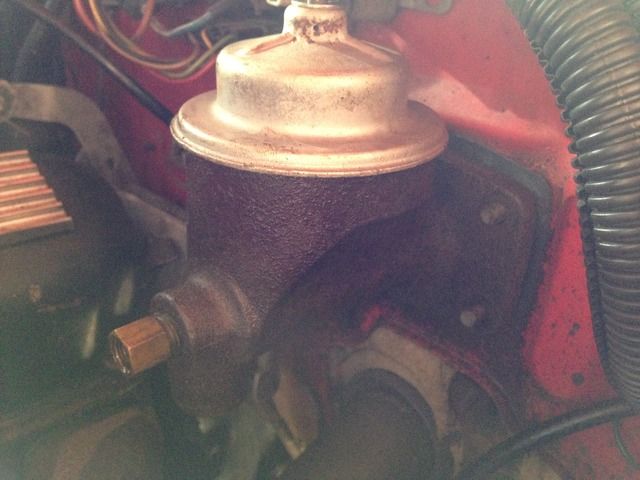
Old single circuit MC.
I started out with a Raybestos MC36221 for a 1967 Barracuda, original with dual brakes.
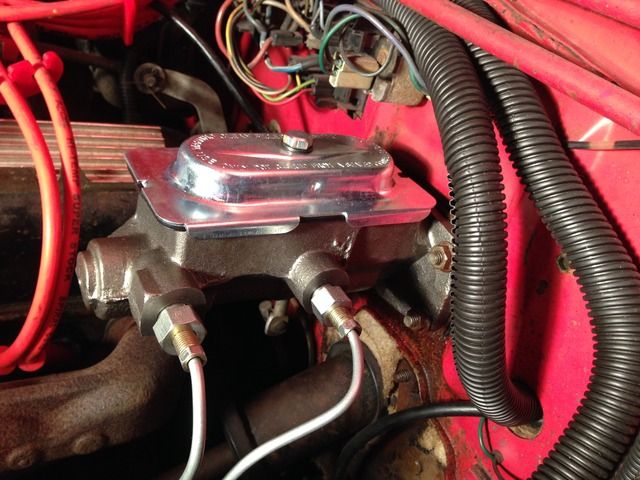
Later research shows that I might have used a MC36338 for the 1971 Barracuda in stead, as it has a bit longer pedal travel, lighter pedal force required and a better feel for the brakes, but anyhow.
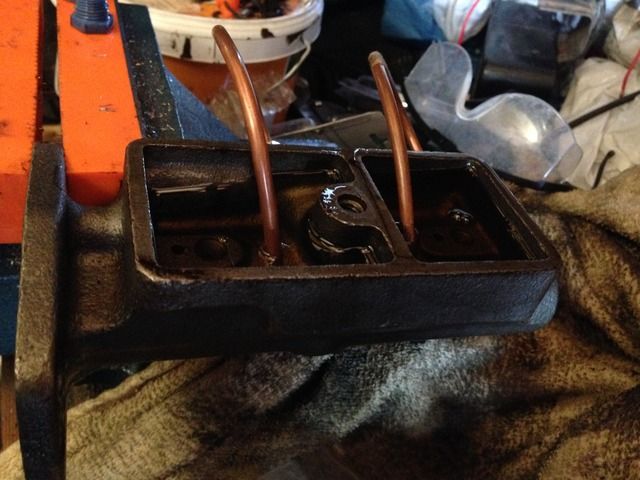
Througout bench bleeding required, to make sure I got out all the air trapped in the MC.
The Barracuda is originally fitted with 3/16" inverted flare tubing, with 3/8"-24NS threads. From the brake junction box below the MC, I pulled the tube traveling to the rear of the car, and plugged the junction with a 3/16" inverted flare plug fitting with 3/8"-24NS threads.
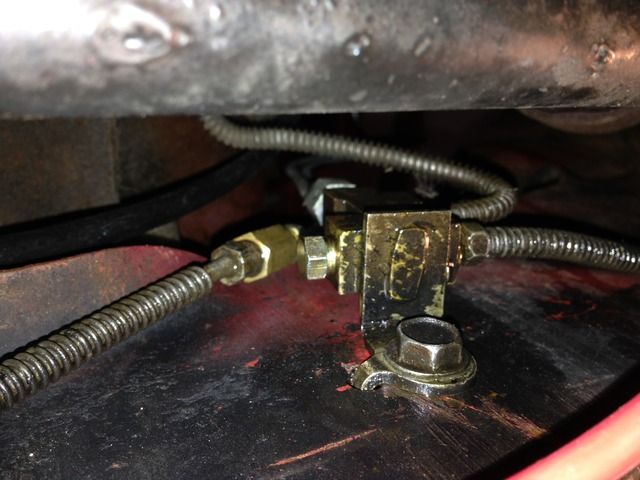
And as you can see, I used a 3/16" inverted flare joint to join the old pipes with a new one, that I pulled up to the FRONT port of the MC.
Now the original MC was fitted with a 1/4" tube, with 7/16"-24NS threads. I bought 3/16" tubes, so I needed a 7/16"-24NS to 3/8"-24NS adapter to the top port of the junction box.

This pipe was pulled up to the REAR port of the MC.
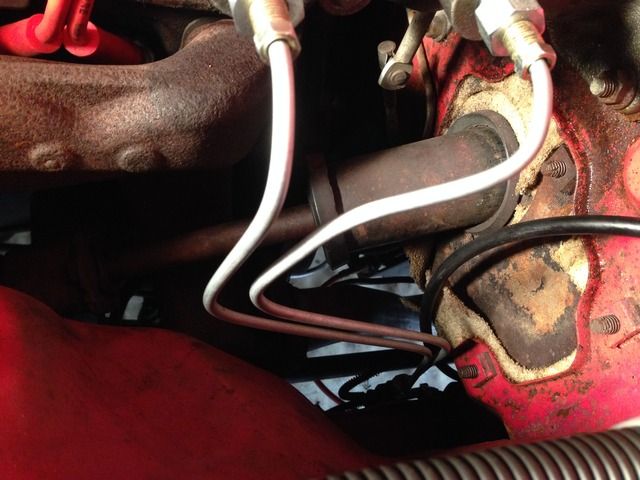
Unfortunately, I had bought a bit short tubes, only 20" long, so I was unable to add a spiral to the tubing to take up vibrations. But I think I got so much slack in the tubing that it'll be OK.
Now the MC had a front port with 9/16"-20 threads, and a rear port with 1/2"-20. Hence I needed adapters, 9/16"-20 to 3/8"-24 and 1/2"-20 to 3/8"-24.

The MC36221 was bolt-on, and fitted directly into the old MC bolt pattern.
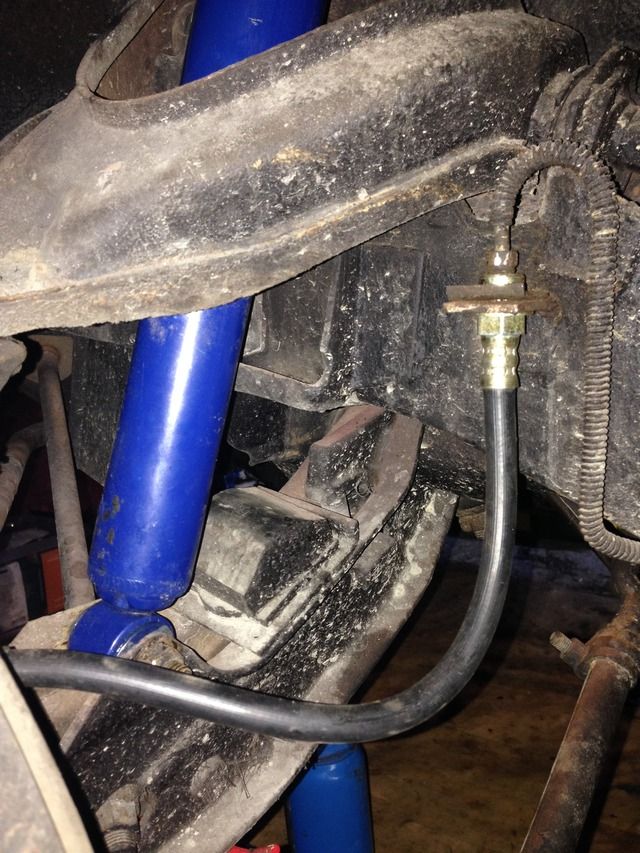
Now that I had all of the brake lines already drained for brake fluid, I also swapped all three of the brake hoses with new ones, and new hose clips.
Refilled the system, bled it throughoutly, and there you have it.
I used these parts:
Master cylinder Raybestos MC36221
2x 3/16" inverted flare brake lines, I bought 20", but recommend longer ones.
3/16" inverted flare plug fitting for the junction
3/16" inverted flare joint
7/16"-24 to 3/8"-24 inverted flare adapter
1 / 2"-20 to 3/8"-24 inverted flare adapter
9/16"-20 to 3/8"-24 inverted flare adapter
New brake hoses
New brake hose clips

Old single circuit MC.
I started out with a Raybestos MC36221 for a 1967 Barracuda, original with dual brakes.

Later research shows that I might have used a MC36338 for the 1971 Barracuda in stead, as it has a bit longer pedal travel, lighter pedal force required and a better feel for the brakes, but anyhow.

Througout bench bleeding required, to make sure I got out all the air trapped in the MC.
The Barracuda is originally fitted with 3/16" inverted flare tubing, with 3/8"-24NS threads. From the brake junction box below the MC, I pulled the tube traveling to the rear of the car, and plugged the junction with a 3/16" inverted flare plug fitting with 3/8"-24NS threads.

And as you can see, I used a 3/16" inverted flare joint to join the old pipes with a new one, that I pulled up to the FRONT port of the MC.
Now the original MC was fitted with a 1/4" tube, with 7/16"-24NS threads. I bought 3/16" tubes, so I needed a 7/16"-24NS to 3/8"-24NS adapter to the top port of the junction box.

This pipe was pulled up to the REAR port of the MC.

Unfortunately, I had bought a bit short tubes, only 20" long, so I was unable to add a spiral to the tubing to take up vibrations. But I think I got so much slack in the tubing that it'll be OK.
Now the MC had a front port with 9/16"-20 threads, and a rear port with 1/2"-20. Hence I needed adapters, 9/16"-20 to 3/8"-24 and 1/2"-20 to 3/8"-24.

The MC36221 was bolt-on, and fitted directly into the old MC bolt pattern.

Now that I had all of the brake lines already drained for brake fluid, I also swapped all three of the brake hoses with new ones, and new hose clips.
Refilled the system, bled it throughoutly, and there you have it.
I used these parts:
Master cylinder Raybestos MC36221
2x 3/16" inverted flare brake lines, I bought 20", but recommend longer ones.
3/16" inverted flare plug fitting for the junction
3/16" inverted flare joint
7/16"-24 to 3/8"-24 inverted flare adapter
1 / 2"-20 to 3/8"-24 inverted flare adapter
9/16"-20 to 3/8"-24 inverted flare adapter
New brake hoses
New brake hose clips
















